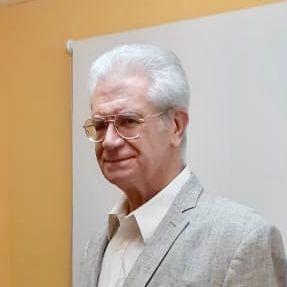The “rare earths” are present in the terrestrial cortex in sparse quantities and special characteristics, due to their electrical, magnetic, fluorescence or luminiscence properties; they are highly demanded. They were discovered in 1787, Sweden, on the island of Resarö, where the small people of Ytterby, 30 km from Stockholm, settled; but only in the late 1940s, of the last century, began to be used in the industry.They represent a set of seventeen metallic chemical elements belonging to group III B of the periodic table, which are classified in light and heavy, within the first are: Scandio, lanthane, cerio, praseodimio, neodimio, samario, prometio and europio. While among the heavy are: gadolinium, disprosio, terbio, erbio, itrio, holmio, tulio, lutecio and eterbio.
USES AND APPLICATIONS
By their physical characteristics and chemical composition, the elements mentioned above have marked a transcendental qualitative change in microelectronics and cybernetics.The “rare earths” have multiple applications, finding them in: LED lamps, hybrid motors, hybrid batteries, metal alloys, automobile catalysts, computer and laptop hard drives, mobile phones, cameras, reflectors, aircraft parts, magnets, optical fiber, optical glass, phosphorus, catalysts in oil refining, laser and steel alloys, medical marks such as notes and marks.The above allows to state that these mineral resources are essential for the modernization of industrial production processes, economic activity in general and the quality of life in particular.INTERNATIONAL CONTEXT
World reserves of “rare land” amount to nearly 130 million metric tons, of which 55% is in the People’s Republic of China, followed by Vietnam, Russia and Brazil.It should be noted that China's privilege position, because it has the largest number of deposits in activity, allows it to significantly influence the quantity offered, exports and international prices - since they are not raw materials -, so it has developed a strategic commercial policy around these "lands", which validated it commercial requirements before the World Trade Organization's Difference Resolution Body, the US and Japan, which are the main destinations of South Korea.The international map of the “rare land”, has in the People’s Republic a prominent actor, because his position of power is sustained in a strong comparative and competitive advantage in the complicated and expensive extractive process that is also contaminant, due to that many of the minerals obtained are associated with radioactive elements such as uranium or thorium.NATIONAL CONTEXT
In the territory of our country, the deposits with primary mineralizations of “rare land”, are found in several provinces:_
The Canadian company Artha Resources announced a discovery in the Cachi area, where they estimate that the surface with potential to be exploited would be approximately 55,000 hectares._
Another signature from Canada: Wealth Minerals acquired 6,000 hectares near the town of Rodeo dos Molles, to begin the search in an area considered by geologists as the undeveloped project with the greatest potential of South America._
National technical institutes and the province since 2005 have been conducting studies that allow to state that in Jasimampa (Sierra de Sumampa) the most important jazimento of the country of "light rare lands" and the second in importance in South America, after Brazil.They are considered strategic reserves, but still lack to explore in the three dimensions: length, width and depth, concentrated in an estimated area of approximately 15 kilometers._
There are recent studies of prospective miner in the departments of Valle Fértil, Church, Calingasta, Jáchal and Caucete, identifying areas of interest that contain economic mineralizations with gold, silver, copper and “rare land”; with encouraging results particularly in relation to the existence of: cerio, holmio, itrio and lantano.CONCLUSIONS
We are facing the presence of historical events of global technological and energy transformation, which have a starting point in renewable energies and electromobility.Today we are forced to pay attention to the energic symbiosis – mining, from the global tendency to fight global warming and the consequent rise in the demand for lithium and the different components of the so-called “rare land”.It is the time to decisively expand the exporting offer of our country, in agro-industry, energy, the industry of knowledge and mining, so it is essential to have a ruling class that is at least up to our resources.Lic. Juan Carlos Marcolongo


Comments